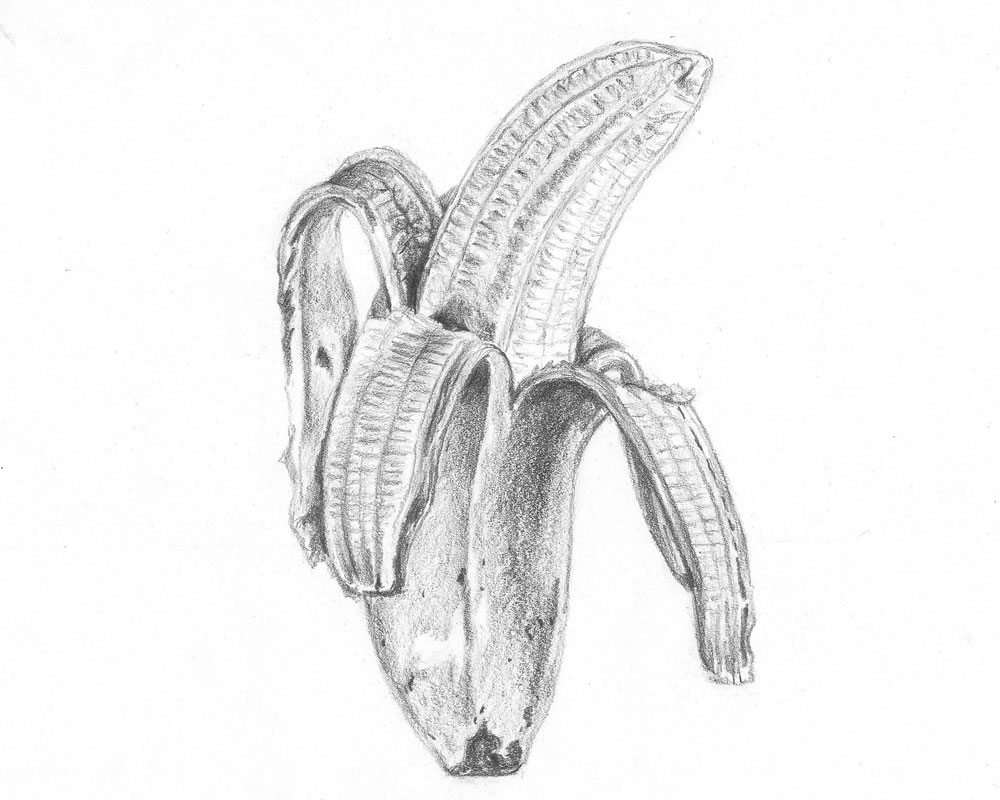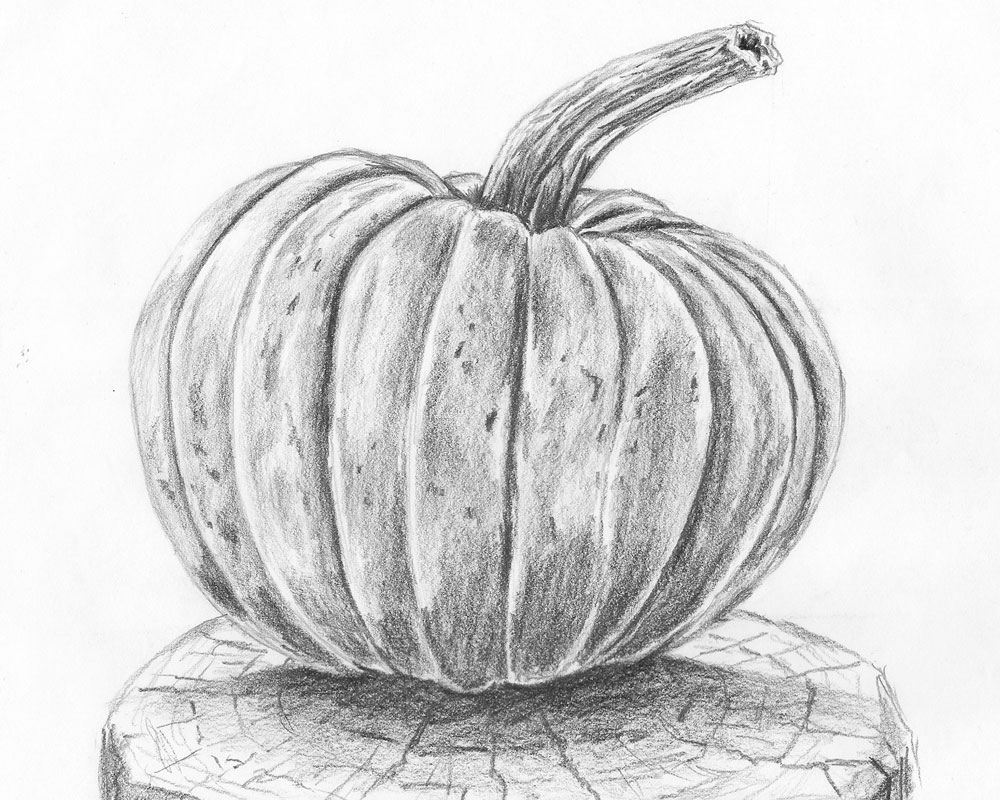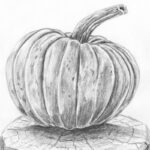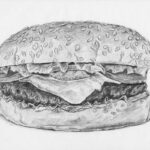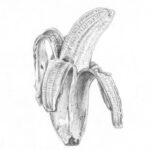What You Should Know About Drawing Food as a Beginner
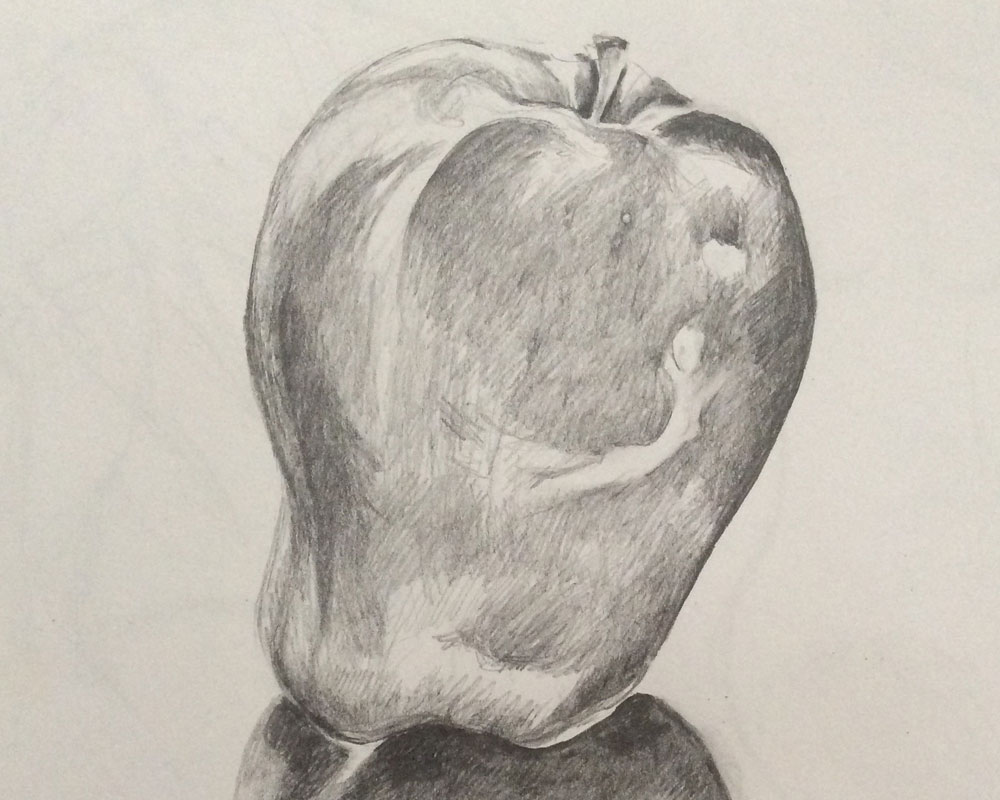
When people think about food, they usually think about eating it rather than drawing it.
However, food can be the subject of some very interesting drawings.
Have you ever heard of the phrase, “Do what you love?”
Well, I love to draw, and I love to eat! Who doesn’t love to eat, right?
If you are anything like me, you can agree that there is some fun to be had by choosing to draw food.
If you are a beginner, please don’t think that you are only capable of simplified line drawings of food. Even if just starting out, you can create a certain level of realism with food drawings without as much effort as you think.
Read on to find out more about how to draw food!
Table of Contents
Pros and Cons to Drawing Food
There are a lot of good reasons for you to add food to your bucket of drawing ideas. There are also a few downsides to it. Let’s talk about some pros and cons.
Pros
- Food is a staple of still life drawing, allowing you to create interesting compositions.
- If you are drawing food from life, it will stay perfectly in place for you!
- You have plenty of choices for drawing subjects. Venture no farther than your kitchen, garden, or local grocery store or farmer’s market.
- If you’d rather draw food from reference photos, it’s easy to build up a collection using foods you already have.
- Drawing your favorite foods can be an incentive for building a daily sketching habit. Sketch one per day, and you get to eat it as a reward for finishing!
Cons
- Certain foods, like hot foods or juicy foods that could get soggy, are not ideal for drawing from life if you plan on eating them too.
- Sometimes, it can be challenging to draw food in a realistic way that maintains its appeal and still looks appetizing.
Which Foods Should I Draw?
I may have eluded to an answer to this question in the previous section. A good start is to draw foods you already have in your house.
Like I mentioned earlier, drawing your favorite foods can serve as a motivator. You are likely to be more excited about a drawing subject that you really enjoy.
If you are drawing multiple foods in a still-life composition, you can choose foods that make a pleasing arrangement to the eye. Just try putting them in different positions with various lighting options. Pick the one that looks the best. By the way, these don’t all have to be foods you like.
You can also get ideas from looking at the menus from your favorite places to eat out. Scan the menus for delicious appetizers, entrees, and desserts. Read the descriptions. Menus are great at using adjectives to give tasty details about a restaurant’s food options. If the menu has no pictures, imagine you are an illustrator tasked with drawing a picture of the food that will get the customer’s mouth watering. If the menu has pictures, then great! They can serve as additional inspiration.
Ultimately, the answer to the question “Which foods should I draw?” should reflect your current goals and inspiration. Don’t be afraid to draw unfamiliar food or even food you don’t like. If your drawing is appreciated by others and you sharpen your skills in the process, then whatever you choose is well worth it.
Tips for Drawing Food
Now that you know a little bit about why you should draw food and what kind of foods to draw, let’s take a look at how to draw food. Here are a few tips for getting better at drawing food.
Start with Basic Shapes
Use basic shapes to establish the outline. Try looking at the food you are drawing as if it were composed of smaller geometric shapes.
For example, if you were drawing a pizza, you would start with a circle. If it were a pizza sliced into 8 equal pieces, you would divide the circle with a vertical line, a horizontal line, and two diagonal lines.
Now, that is only if you are looking directly down at the pizza from above. If you were looking at the pizza from an angle, there would be some foreshortening. Therefore, you would start with an oval instead of a circle. Also, the slices will not appear as equal as before. Due to foreshortening, the pieces closer to the viewer will appear slightly larger than the pieces at the farther end of the pizza.
Use a Mix of Values and Textures
After completing the outline of your food drawing, you can take it to the next level with shading. Using a mix of light and dark values will turn your food outline into a more three-dimensional form.
In addition, try to add details that replicate the texture of your chosen food. Look for carves or bumps on the surface. This will add another layer of realism.
Create a Composition of Food Arranged with Other Foods or Objects
Don’t feel like you have to stop drawing once you have your one chosen food completed on your drawing paper. What other foods or objects should be paired with your food? What combination of subjects would make a more pleasing drawing or tell a more interesting story?
Think about foods that commonly go with your food. If you are drawing an apple, consider drawing other fruits with it, such as oranges, bananas, or grapes. If you are drawing a hamburger, maybe you can draw some fries next to it.
What other non-food items should you create in your food drawings? Think about common objects that surround the food in our everyday lives. Some examples are tables and tablecloths, plates, utensils, a vase of flowers, and even salt and pepper shakers.
Drawing Food Tutorials
Here are a few links to tutorials that will get you started with drawing food.

